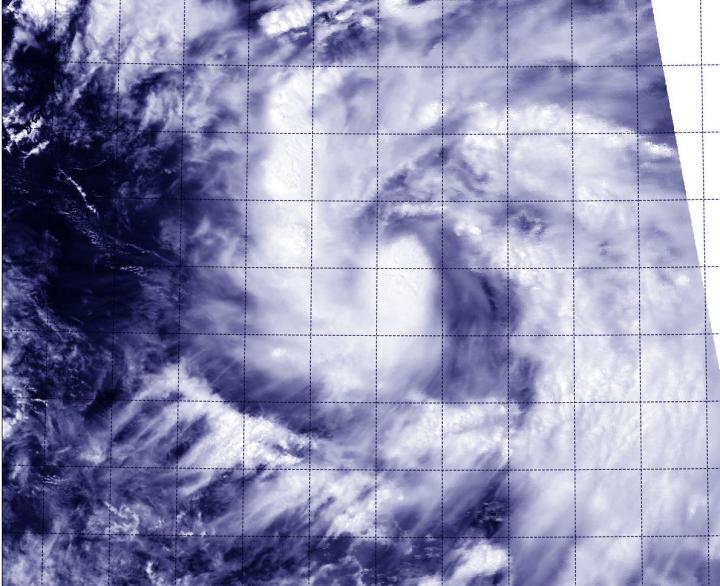Newborn Tropical Storm Phanfone triggers warnings in Northwestern Pacific

The MODIS instrument aboard NASA's Aqua satellite took this visible image of Tropical Storm Phanfone in the Northwestern Pacific, on track for the Northern Marianas Islands. Credit: NASA Goddard MODIS Rapid Response Team
A tropical storm Warning is in effect for Saipan, Tinian, Pagan and Alamagan. In addition, a typhoon watch is in effect for the northern Marianas Islands, including Pagan and Alamagan.
The Moderate Resolution Imaging Spectroradiometer (MODIS) aboard Aqua provides visible and infrared images of storms, oceans and land features.
On Sept. 29 at 11 a.m. EDT (1500 UTC) Phanfone had maximum sustained winds near 40 knots (46 mph/74 kph). It was centered near 13.8 north latitude and 149.6 east longitude, about 270 nautical miles east-southeast of Saipan. Phanfone is moving to the west-northwest at 11 knots (12.6 mph/20.3 kph).
The U.S. National Weather Service in Guam issued a statement on Sept. 29 about Phanfone's approach: “Tropical Storm Phanfone will be strengthening into a typhoon as it crosses the Northern Mariana Islands with the center passing near…most likely north of Saipan on Sept. 30, Tuesday night or early Wednesday, Oct. 1.
It is important to note that only small changes in the forecast track and intensity will lead to significantly varying Impacts. Expect heavy rain…thunderstorms…dangerous surf…and damaging winds.” For forecast updates, visit: http://forecast.weather.gov/MapClick.php?map.x=249&map.y=58&site=gum
Forecasters at the Joint Typhoon Warning Center expect Phanfone to intensify as it moves to the west-northwest toward the Marianas Islands. After passing through the islands, Phanfone is expected to reach typhoon strength and move west of the island of Iwo To by Oct. 2 or 3.
Media Contact
All latest news from the category: Earth Sciences
Earth Sciences (also referred to as Geosciences), which deals with basic issues surrounding our planet, plays a vital role in the area of energy and raw materials supply.
Earth Sciences comprises subjects such as geology, geography, geological informatics, paleontology, mineralogy, petrography, crystallography, geophysics, geodesy, glaciology, cartography, photogrammetry, meteorology and seismology, early-warning systems, earthquake research and polar research.
Newest articles

“Nanostitches” enable lighter and tougher composite materials
In research that may lead to next-generation airplanes and spacecraft, MIT engineers used carbon nanotubes to prevent cracking in multilayered composites. To save on fuel and reduce aircraft emissions, engineers…

Trash to treasure
Researchers turn metal waste into catalyst for hydrogen. Scientists have found a way to transform metal waste into a highly efficient catalyst to make hydrogen from water, a discovery that…

Real-time detection of infectious disease viruses
… by searching for molecular fingerprinting. A research team consisting of Professor Kyoung-Duck Park and Taeyoung Moon and Huitae Joo, PhD candidates, from the Department of Physics at Pohang University…




















